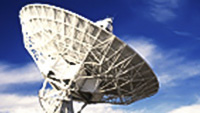Search and order online
Phobos phase angles explained
- Video Online only
- Title Phobos phase angles explained
- Released: 12/12/2019
- Length 00:00:27
- Language English
- Footage Type Animation
- Copyright ESA/DLR/FU Berlin, CC BY-SA 3.0 IGO
- Description
ESA’s Mars Express recently tracked the small martian moon Phobos as it flew past the spacecraft, capturing detailed views of the pockmarked, irregularly shaped body at different angles and stages of the flyby.
This image sequence nicely demonstrates the concept of ‘phase angle’: the angle between a light source (in this case, the Sun) and the observer (Mars Express’ HRSC), as viewed from the target object itself (Phobos). The initial phase angle is 17 degrees, drops to almost 0 degrees mid-way through (when Phobos is at its brightest), and then rises to 15 degrees by the end of the animation.
Phase angle, and how it corresponds to what we see, is represented in the animation to the right of the image sequence. The movie comprises 41 images taken by the High Resolution Stereo Camera’s Super Resolution Channel on 17 November 2019 during orbit 20 076, when Phobos passed Mars Express at a distance of roughly 2400 km. The images have a resolution of 21 m/pixel.


